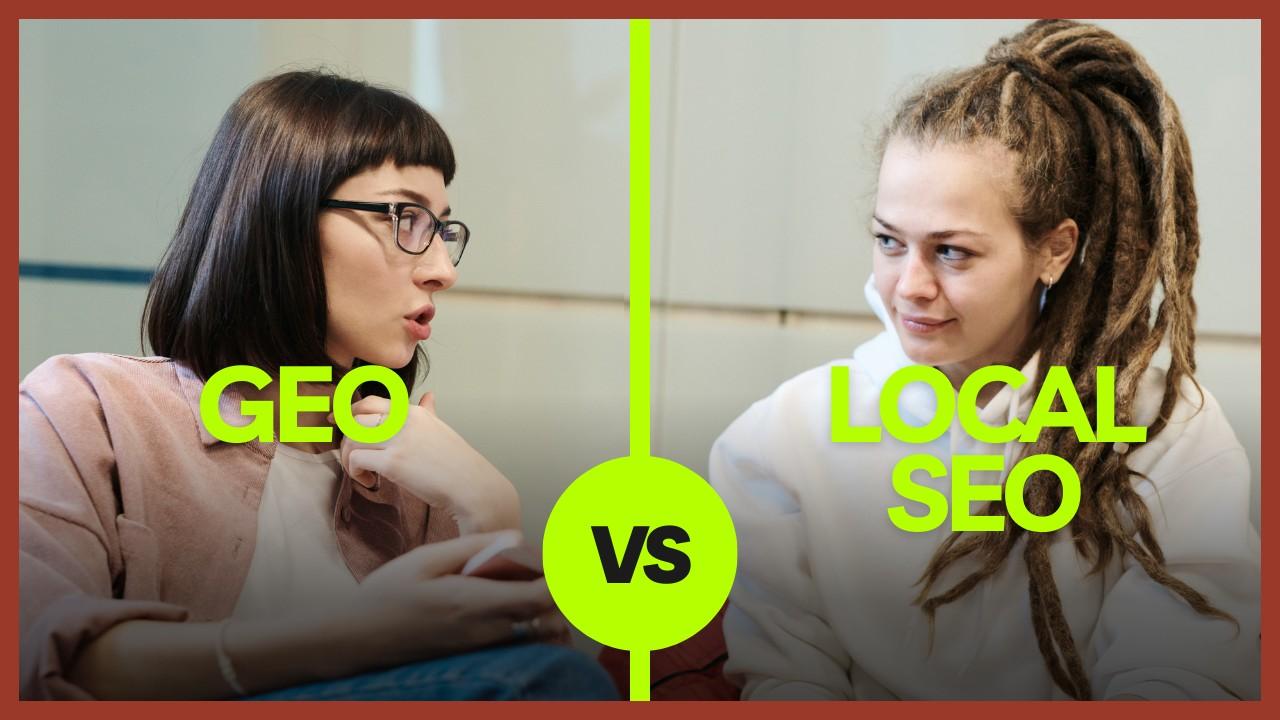GEO x Local SEO: What It Means for the Future of Discovery
The intersection of GEO (Generative Engine Optimization) and local SEO is reshaping how businesses are discovered online, especially as AI-driven tools and geo-targeted algorithms take center stage in search. Understanding this convergence is key for future-proofing digital strategies in an era when discovery is increasingly personalized and location-specific.
What is GEO and How Does It Differ from Local SEO?
- GEO (Generative Engine Optimization) focuses on optimizing content for AI-driven search engines like ChatGPT, Perplexity, and Google’s AI Overview. It ensures your content is cited or featured within generative search engine answers, making your brand visible even when users don’t click through traditional search engine results.
- Local SEO optimizes websites and business profiles so they show up for location-based queries, such as “[service] near me,” in local map packs and organic search results. Location relevance and proximity are central to ranking high for these searches.
Why GEO x Local SEO Matter Together
- AI-driven engines increasingly mediate discovery: Generative engines synthesize information from across the web and highlight sources for deeper exploration. Getting cited in AI answers is the new gateway to local consumer trust and action.
- Local queries are highly transactional: When users search for services or products nearby, their intent to purchase or visit is high, making discoverability critical for local businesses.
- Mobile and voice search explosion: With smart devices, searches are shorter, spoken, and more location-targeted. AI and local SEO combine to serve results tailored to the user’s immediate context, further merging GEO with local intent.
Key Trends for the Future of Discovery
1. AI Generative Engines Will Dominate
Within five years, users will rely heavily on AI models for information, shifting the balance from traditional results pages to synthesized answers with cited sources.
2. Hyper-local and Personalized Search
Search results will use users’ precise location, preferences, and search history to deliver hyper-local and highly personalized recommendations — from businesses on a specific street to niche services in small neighborhoods.
3. Multimodal & Visual Search
AI will blend text, images, video, and audio for richer search experiences. Businesses will need to optimize visual content, geotag photos, and be ready for location-aware AR and visual search apps.
4. Voice and “Near Me” Search Optimization
Speech-driven queries and “near me” searches will proliferate, changing how businesses structure content and metadata to capture these high-intent leads.
5. Citation Supremacy in AI Results
Being cited by generative engines establishes brand authority, trustworthiness, and visibility — whether or not the user clicks. This means optimizing for GEO alongside classic SEO is vital for future discovery.
Practical Strategies for Businesses
- Combine SEO & GEO: Optimize content for both traditional ranking factors and AI requirements, ensuring technical SEO, content quality, and factual accuracy.
- Hyper-local Keyword Targeting: Tailor content to specific neighborhoods, landmarks, and local events for maximum relevance, and use geotagged imagery to boost rankings for “near me” searches.
- Embrace Visual and AR Content: Upload high-quality, geotagged images and consider AR experiences to connect users with your location in innovative ways.
- Continually Update Profiles: Keep Google My Business and social profiles active, accurate, and optimized to match emerging AI and local search trends.
Conclusion
The future of discovery is AI-powered, location-aware, and deeply personalized. Businesses that understand and implement both GEO and local SEO strategies will not just survive but thrive, securing top visibility in both generative engine answers and local searches. To stay ahead, brands must optimize for the new realities of search where being local and being cited by AI engines means being seen, trusted, and chosen.


